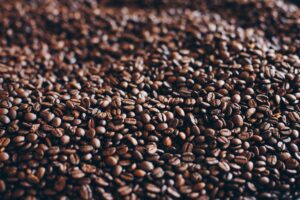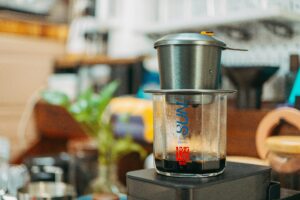Coffee is more than just a drink—it’s an experience that connects people across cultures and continents. The best coffee beans from around the world each tell a unique story, shaped by their growing conditions, processing methods, and regional traditions. From the birthplace of coffee in Ethiopia to the rich volcanic soils of Guatemala, every cup holds the essence of its origin. If you’ve ever wondered what makes one coffee taste fruity while another has deep chocolate notes, this journey through the world’s finest coffee beans will help you understand the factors that influence flavor and quality.
Table of Contents
Ethiopian Coffee – The Birthplace of Coffee
Ethiopia is where coffee was first discovered, and it remains one of the most celebrated coffee-growing regions in the world. Legend has it that a goat herder named Kaldi noticed his goats becoming unusually energetic after eating red coffee cherries. This discovery led to the cultivation of coffee as a drink, and today, Ethiopian beans are famous for their bright acidity, floral aromas, and complex flavors.
Coffee in Ethiopia is often grown at high altitudes, between 1,500 and 2,200 meters, which allows the beans to develop more sugars and acids, enhancing their taste. The most famous varieties include Yirgacheffe, Sidamo, and Harrar. Yirgacheffe coffee is highly prized for its tea-like qualities, often exhibiting jasmine and citrus notes. Sidamo beans tend to be more balanced with a smooth mouthfeel and berry undertones, while Harrar coffee is known for its bold, wine-like flavors with hints of spice.
Beyond taste, Ethiopia has a deep-rooted coffee culture. Coffee ceremonies are an integral part of Ethiopian hospitality, where beans are roasted fresh, ground, and brewed in a traditional pot called a jebena. This slow, deliberate process reflects the country’s appreciation for coffee as more than just a beverage—it’s a way of life.
Colombian Coffee – Smooth and Balanced
Colombia has earned a reputation for producing some of the smoothest and most well-balanced coffee in the world. Thanks to its ideal climate, volcanic soil, and high-altitude farms ranging from 1,200 to 1,800 meters, Colombian coffee is known for its medium acidity, caramel sweetness, and nutty undertones. The country primarily grows Arabica beans, ensuring a high-quality cup with every harvest.
Colombian coffee is almost always hand-picked, a labor-intensive process that ensures only the ripest cherries are selected. This meticulous attention to quality has helped Colombia maintain its position as one of the world’s top coffee exporters. Two of the most popular varieties are Supremo and Excelso. Supremo beans are larger and tend to have a smooth, well-rounded taste, while Excelso beans are slightly smaller but still offer a rich and balanced flavor.
The Colombian coffee experience is not just about drinking the coffee—it’s also about visiting the lush coffee-growing regions. The “Coffee Triangle,” which includes the areas of Manizales, Armenia, and Pereira, is a UNESCO World Heritage site that attracts coffee enthusiasts from around the world who want to see the process from farm to cup.
Jamaican Blue Mountain – The Luxury Coffee
Jamaican Blue Mountain coffee is one of the most exclusive and expensive coffees in the world. Grown in the Blue Mountains of Jamaica at altitudes between 900 and 1,700 meters, this coffee is highly sought after for its mild flavor, smooth body, and complete lack of bitterness. The misty, cool climate slows down the maturation of the beans, allowing them to develop a refined taste that is both delicate and complex.
What sets Jamaican Blue Mountain coffee apart is the strict quality control. The Coffee Industry Board of Jamaica rigorously inspects and certifies each batch, ensuring that only the best beans make it to market. The result is a cup that is exceptionally smooth, with subtle hints of chocolate, nuts, and floral undertones. Due to its limited production, this coffee is a luxury experience that many connoisseurs are willing to pay a premium for.
Hawaiian Kona Coffee – Volcanic Perfection
Hawaii’s Kona coffee is another example of high-quality, small-batch production. Grown on the slopes of Mauna Loa, one of the world’s largest volcanoes, Kona coffee benefits from the mineral-rich soil and consistent sunshine that create ideal growing conditions. The beans produce a rich and smooth cup with a slightly nutty, chocolatey finish.
One of the challenges with Kona coffee is ensuring authenticity. Because true Kona coffee is rare, many blends on the market contain only a small percentage of actual Kona beans mixed with lower-quality varieties. To experience the real thing, it’s important to look for 100% Kona coffee, which guarantees that you’re tasting the pure flavors of Hawaii’s prized beans.
Guatemalan Coffee – Chocolate Lovers’ Favorite
Guatemala produces some of the most flavorful coffee in the world, with a taste profile that often includes deep chocolate notes, caramel sweetness, and a full body. The country’s volcanic soil, high altitudes, and abundant rainfall create perfect growing conditions for coffee, especially in the Antigua and Huehuetenango regions.
Antigua coffee is famous for its bold, chocolatey character, often accompanied by a hint of spice. Huehuetenango, on the other hand, produces beans with a sweeter, more floral quality. The combination of these elements results in a rich and complex cup that appeals to coffee lovers who enjoy a deep, satisfying flavor.
Brazilian Coffee – The Espresso King
Brazil is the largest coffee producer in the world, and its beans are the foundation of many espresso blends. The country primarily grows lower-acid, full-bodied coffee, making it perfect for those who enjoy a smooth and creamy cup. Brazilian coffee often has nutty, chocolatey flavors with a touch of caramel sweetness.
Unlike many high-altitude coffees, Brazilian coffee is grown at lower elevations, which results in a more mellow and less acidic profile. It is frequently processed using the natural method, where the coffee cherries are dried with the fruit still intact, leading to a sweeter and more complex taste.
Vietnamese Robusta – The Strongest Coffee on Earth
Vietnam is the world’s second-largest coffee producer and specializes in Robusta beans, which contain nearly twice the caffeine of Arabica. Robusta coffee has a bold, earthy flavor with a slightly bitter finish, making it the perfect choice for those who prefer strong coffee.
One of Vietnam’s most unique coffee traditions is egg coffee, a sweet and creamy concoction made with whipped egg yolks and condensed milk. This drink transforms the naturally bitter Robusta beans into a rich and indulgent treat, showcasing Vietnam’s creativity in coffee preparation.
Panama Geisha Coffee – The Most Expensive Coffee in the World
Panama’s Geisha coffee has taken the specialty coffee world by storm, often fetching record-breaking prices at auctions. Known for its bright acidity, tea-like body, and intense floral and citrus notes, Geisha coffee is unlike any other. It is grown at high altitudes and requires meticulous cultivation, which contributes to its rarity and high cost.
For coffee lovers who enjoy delicate and complex flavors, Geisha coffee is a must-try. The experience of drinking it is often compared to tasting fine wine, with layers of flavor unfolding with each sip.
Final Thoughts on the World’s Best Coffee Beans
The best coffee beans come from regions with unique growing conditions that influence their taste, aroma, and overall experience. Whether you prefer the floral brightness of Ethiopian coffee, the smooth balance of Colombian beans, or the rich chocolatey depth of Guatemalan coffee, there’s a perfect coffee for every taste. Exploring different coffee origins is not just about drinking coffee—it’s about understanding the journey of the bean from farm to cup. So next time you sip your favorite brew, take a moment to appreciate the story behind it.






